





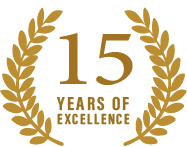
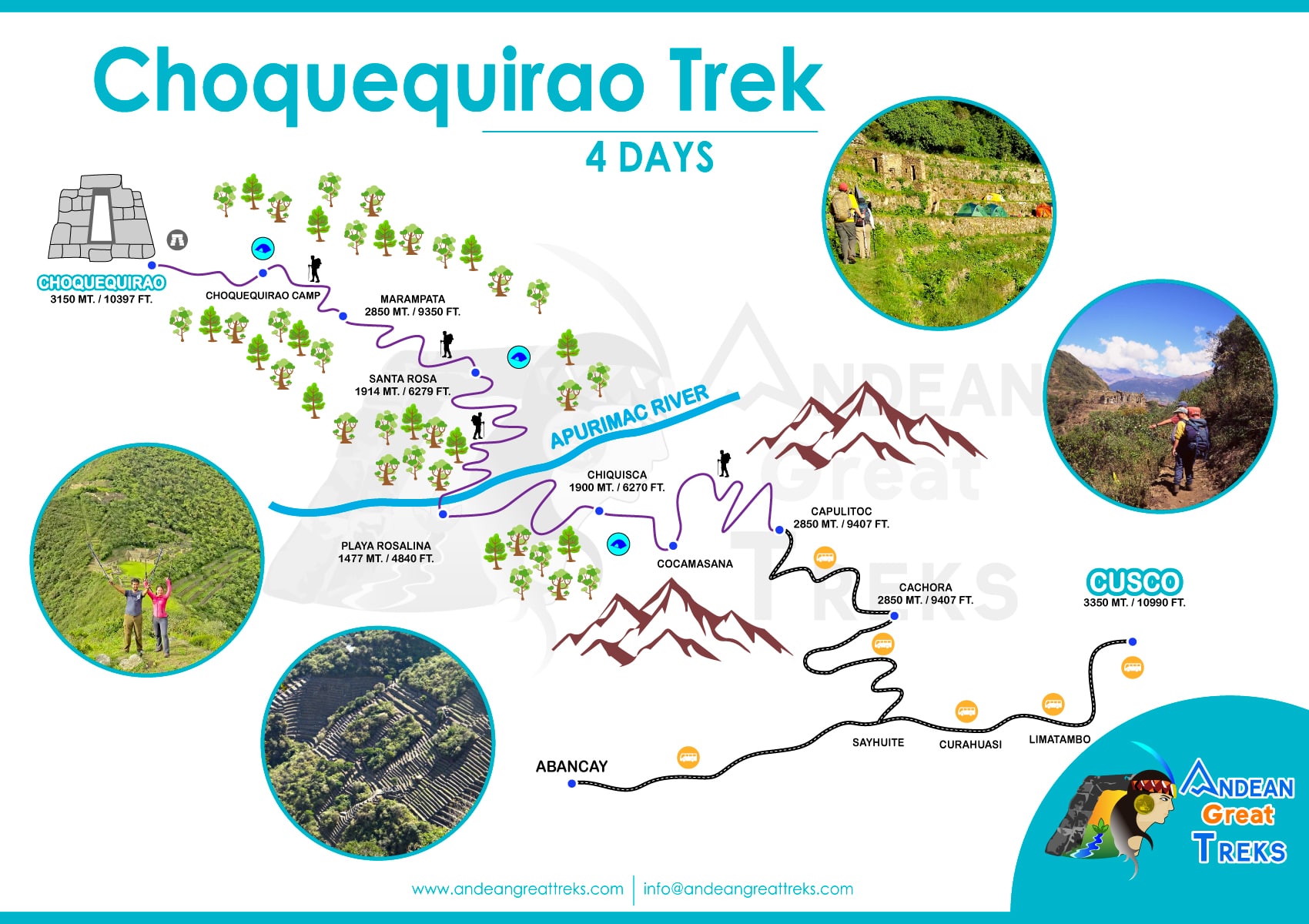 trip overview
included
trip highlights
activities
accommodations
itinerary
packing list
faq
essential trip information
best season to travel
price & availability
Reserve Online
trip overview
included
trip highlights
activities
accommodations
itinerary
packing list
faq
essential trip information
best season to travel
price & availability
Reserve Online
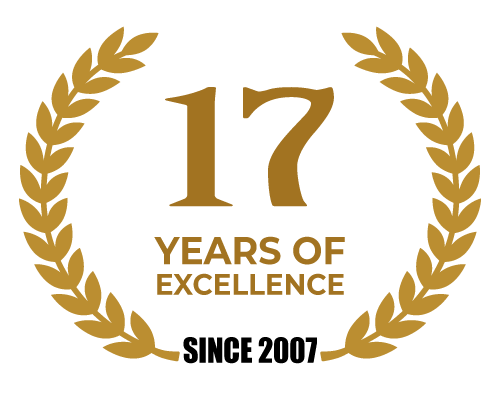 CREATING AUTHENTIC TOURS IN PERU
CREATING AUTHENTIC TOURS IN PERU

The Choquequirao trek is an adventure in the truest sense of the word. Sitting high in the Vilcabamba mountain range, the 15th-Century Choquequirao Archaeological Complex is only accessible by foot. And while Choquequirao closely resembles Machu Picchu with terraces, temples, plazas, and aqueducts, there is one very noticeable difference between the two: Machu Picchu gets around 3,300 visitors per day, while Choquequirao sees an average of only 15 to 20.
The Choquequirao ruins are all of the things you want in an archeological site: beautiful, mysterious, extensive, unique, fascinating, etc. They have been classified successively as a fortress, a ceremonial center, a city and the last residence of the Inca.In Quechua, Choquequirao means “cradle of gold” and many theorize that there were gold mines nearby that were exploited during the Inca Empire. However, as with so much Inca history, the original name of the site is still lost in the time.
The hike to Choquequirao is challenging, especially because of the rugged geography where the winding road crosses, uneven slopes with little oxygen from 3,000 meters above sea level down to 1,500 meters above sea level and again rising above 3,000 meters above sea level. And this adds to the distance, since the path passes through places where there is no presence of people. This walk demands a good will and important physical activity to be able to face it, you must be accustomed to daily exercises, walks, bike riding, in a nutshell this route is considered as difficult. The way to get there is walking a lot and camping, you will challenge climates from cold in the heights or walking in the intense Andean sun.
Choquequirao Trek Camping Tents: 03 nights
The overnight stays during the Choquequirao Trek are made in double-roofed tents, which are installed by the accompanying team. The tents are equipped with thick foam mattresses that are carried by the horses. On your Choquequirao trek you will have a tent with your portable toilet, in the camps, these are always clean and you can use at any time. A dining tent offers enough space to eat together and end the evening in peace.
We will pick you up from your hotel between 3:30 to 4:00 AM to start our trip in a private van for 4 hours to northeast of Cusco city, through small towns until Capuliyoc town (2.800masl) where we have a delicious breakfast and where also we will meet with our trip staff (muleteers and horses).
After breakfast we begin with our hiking for about 20 minutes and will arrive to our first viewer where we have a panoramic view, in front of us we can see the vilcabamba mountain range called ( padreyoc) and the famous Apurimac Canon, after having an amazing view we will start our descend for 3 hours through beautiful landscapes where you will be able to see different medicinal plants which were used by our ancestors ( muña, chilca and different varieties of plants) If we are lucky we will be able to see the majestic Condor, we descend until Chiquisca Hamlet (1800masl) where we have a delicious tipycal Cusco Lunch Buffet.
After having Lunch we will have a 30 min break to continue with or hiking, Descending 45 minutes more until Playa Rosalina (1700masl), located in Apurimac River. After passing the famous Apurimac river we continue hiking uphill a zigzagging road for 4 hours until Marampata (3500masl), at sunset we will see andean people, how they live in the mountains with a style of life that maybe you wont believe compared to the city. We will arrive to our camping site at 5:30 pm, after a small break its time for dinner, during the night you will be able to see constellations according Andean or Inca religión.
After breakfast, we will continue with our hiking to the ruins of Choquequirao, on this day the hiking is going to have a high level physically, where we will be able to see an amazing view of the Archeological Choquequirao Complex (3100masl) we will have amazing canon views. Choquequirao is also knew as the lost city of the Incas, we will visit the magnificent archeological site of Choquequirao for the entire day.These ruins are three times the size of Machu Picchu and new sections, hidden under the dense jungle, are constantly being discovered. Enjoy the private guided tour and explore all of the beautiful sections of the temples, terraces, palaces, the llamas’ section, and much more.
After to visit all of this places we will start our descend until Choquequirao Camping where our picnic Lunch is waiting for us, after having lunch we will take a 30min break and continue to an amazing place that only us know about it, this place is called cataratas de Pachayoc (water falls) a place where you will be in touch with the nature. Finally we will return to Marampata where dinner is ready and is time to stop over.
This morning we say goodbye to the Choquequirao ruins, and have a chance to spot condors soaring through the morning air as we make our way back along the Choquequirao trail. We’ll go downhill for about 2 to 2 ½ hours to the Apurimac River (1520m / 4986 ft) which we’ll cross. From here we’ll go up to Chikisca (1950m / 6397ft) for lunch. After a short break we continue with our hiking to Cocamasana (2450m / 8038ft) you will arrive around 4:00 pm. Here we’ll also have our tea and dinner and the rest of the time to relax a little.
This morning, we finish our Choquequirao trek , after early breakfast you will get ready to return to Cusco. It will be the last 2 hours uphill to arrive to the end of the trek. When we reach our destination, we’re once again rewarded with spectacular views. You will say goodbye to your team, and then we return in our private car to Cusco 4.5-hour drive, dropping you at your hotel. Today we have lunch on the way.
When packing for your Choquequirao Trek, you should keep in mind that it is best to dress in layers due to the weather variation. The variety of clothes that you must pack to dress in layers is key to your walk, from the morning when it is quite cold until mid afternoon when the temperatures rise and reach their peak and then freeze again at night.
Stratification is also useful as you ascend high passages that are exposed to winds or descend into shady valleys. Effective stratification only works if each layer allows moisture to pass and escape into the external environment. In fact, the best layered clothing, such as wool, promotes moisture transfer through its absorbent properties. Cotton and denim absorb moisture and, therefore, should be avoided.
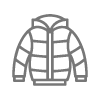 warm jackets
warm jackets
 Hydration bladder
Hydration bladder
 wool socks
wool socks
 camera
camera
 scarf
scarf
 first aid kit
first aid kit
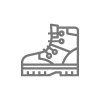 hiking shoes
hiking shoes
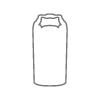 Dry bags
Dry bags
 Trekking Poles
Trekking Poles
 sun cream
sun cream
 Snack
Snack
 sun hat
sun hat
 bathing suite
bathing suite
 rain coat
rain coat
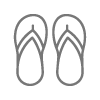 Sandals
Sandals
 insect repellent
insect repellent
 Passport
Passport
 Down Jackets
Down Jackets
 toilet paper
toilet paper
 daypack
daypack
 Wool cap
Wool cap
 head lamp
head lamp
 gloves
gloves
 sun glasses
sun glasses
 cap
cap
 extra cash
extra cash
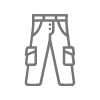 Trekking pants
Trekking pants
Did you ever hear about Choquequirao, the Inca city known as the ‘other Machu Picchu’? This place is an inca archaeological site little known in Peru. However, it hides as many mysteries as the Wonder of the World.
Choquequirao trek is one of the most beautiful treks, also considered the most challenging in the Cusco region. During the tour you will appreciate part of what was the last Inka refuge, beautiful landscapes and snow-capped mountains. If you are a lover of wild flora and fauna; this route offers a complete variety of the entire Cusco region.
During the Choqueqirao Trek ; We will be able to appreciate different types of natural and cultural attractions, which will not cease to surprise us every day. After that, appreciate all the wonderful things that this route can offer.
Solve all your doubts about the archaeological site of Choquequirao.
The archaeological center of Choquequirao is located within the department of Cusco, between the provinces of La Convención and Anta. Surrounded by the great canyon of the Apurimac river.
Ever since the last inhabitants abandoned the Choquequirao site, no Spanish soldiers nor priests could find it; they didn´t even hear about it. Then, years later, and naturally, the thick vegetation began to cover the once well-preserved plaza and buildings, it became a sort of lost city, but the native people living in Cachora colonial village knew that on the other side of the canyon, there were year´s past ruins. Under the Spanish domination, it didn’t interest the recovery of Choquequirao; on the contrary, the few outsiders such as Spanish explorer and mineral prospector Juan Arias Díaz and others who reached Choquequirao looted the site. In 1909, Professor Hiram Bingham from the University of yale visited the site, with the help of a church from Abancay city. They reported the archeological lootings and pottery shards, and there, they announced for the magazines and journals for the outside world. There, the Choquequirao site became notorious, at least for the archeology community. The significant excavations proceeded later in 1970, 2004, and still today, there is much more to uncover in Choquequirao.
Choquequirao is an archaeological site that is found in the Vilcabamba mountain range in Southern Peru. It is roughly two days’ walk from Cusco and is generally considered to be better preserved, more remote, and bigger than the ruins of Machu Picchu. It is considerably harder to get to than Machu Picchu, which means that it is much less visited.
The abandoned citadel of Choquequirao is hidden deep in the Andes Mountains and is only accessible through a multi-day trek. The shortest amount of time the trek is possible is four days. The four-day trek sees travelers trek down 1,500 meters into the mountain canyon and the very next day, taking on the grueling 1,800-meter ascent to arrive at the archeological site.
The name Choquequirao is thought to come from the Quechua language. Quechua was the native language of Peru before the arrival of the Spanish colonizers. It is thought that it is a combination of two words- Chuqi, which means metal, and k’iraw, which means crib, giving the citadel the name ‘metal crib’.
The different altitudes that you will cross during your Choquequirao trek are the following:
Day 1 and 4: Cusco- Capuliyoc- Chiquisca- Playa Rosalina
Day 2 : Santa Rosa Alta – Marampata- Choquequirao
Day 3: Choquequirao – Chiquisqa – Cocamasana
Altitude sickness or soroche as some call it is very common. Because, it is a natural reaction of the body when going through sudden changes in height. For this, the fundamental cause is the lack of oxygen in the body (hypoxia). It seems that this occurs in people who come from a very low altitude. Whose destination has an altitude greater than 2000 meters above sea level and consequently may have the following symptoms:
Mild symptoms:
This list of symptoms can be alleviated with coca leaf tea (highly recommended), altitude sickness pills (check with a doctor before self-medicating). For this reason, you must descend to a lower altitude area, drink hot infusions and remain completely at rest. If the situation does not improve, it is advisable to call a doctor.
Severe symptoms:
This list of symptoms, unlike the previous one, are more dangerous, they can be alleviated with the administration of oxygen through a mask. It is important to descend immediately from the altitude in which you are and medical attention is necessary since an inappropriate maneuver can be fatal for the patient. Likewise, it is suggested to keep the body hydrated by drinking at least 3 to 4 liters of water, avoiding alcoholic beverages, and adding a diet of carbohydrates and sugars.
It is recommended to do the following:
During the Choquequirao trek you will experience features of many climate variations along the route. It probably reached heights of up to 3,000 meters above sea level and unraveled up to 2,010 meters above sea level. Therefore, it is recommended to arrive in the city of Cusco at least 2 days before the trek so that you can eat a light diet, eat little, drink plenty of water and rest well. That is, being able to be in favorable conditions, acclimatize and avoid being affected by the so-called “soroche” or altitude sickness. That generates some problems such as headache, shortness of breath, beautiful, dizziness, etc.
Age: It is recommended that children under 12 years of age and older do not do this walk because it is “challenging”. Also, because it has an extreme cold climate, it requires a good physical condition.
Health: The walk is open to the general public. But, health is a very sensitive issue to take into consideration. Almost, it is not recommended to do this walk for people who have respiratory and cardiac problems. Since, the oxygenation at higher altitude is lower and harder to breathe, which will make your walk more difficult.
Another important point that you must take into consideration before starting the walk. It is to be aware if you have allergies or food restrictions. For this reason, it is preferable to take your medications if you have them and strictly comply with them, remember that there are no hospitals on the walk.
If you do this walk hiring a travel agency, it is very important to inform these details. So that they can take the necessary precautions and bring what is necessary for you to enjoy this walk.
In order to make the Choquequirao Trek we must take into account the physical condition in which we find ourselves. To do this, we must prepare ourselves by strengthening our muscles and our endurance capacity for this walk. Because, it is not uniform and instead shows different levels of difficulty.
Thus, some specialists give the following recommendations:
Go hiking or walking:
It is advisable to walk gradually starting from 2 kilometers to 10 kilometers per day. Above all, to strengthen the muscles and test our endurance capacity. Also, we can make longer walks in mountainous areas that require a higher degree of difficulty. Taking into account that the second day of the Salkantay trek is 22 kilometers.
Breathing exercises:
To carry out the Choquequirao trek, it is important to maintain the rhythm between our steps and our breathing to avoid rapid fatigue. For this reason, it is recommended to practice deep breathing exercises, diffracted breathing, full breathing and alternate breathing between nostrils and mouth.
Adequate diet:
Food is very important when doing this type of walk. Therefore, we recommend eating foods that are rich in iron and vitamin B, which helps us improve blood circulation, preferably eating green vegetables and fish.
Hydration:
Hydration is essential either on the walk or in our physical preparation so we will avoid energy wear and headaches.
During the route, you will cross the province of La Convencion and the district of Vilcabamba, both of which have a temperate-warm climate. But, they have two very defined seasons; the rainy season and the dry season:
Rainy season:
This season includes the months of November to March. During these months there will be rainfall, mighty rivers, the roads will become rough and there will even be landslides and the sky will always be cloudy; As for the temperature, the maximum recorded is 20°C and drops to 13°C.
Dry season:
This season includes the months of April to October. It is advisable to take walks during these months because the roads are in better condition; the presence of rains is very occasional and snow is rarely present in the higher altitude areas. But, it should be noted that the months of June and July are the frost season, so these months will be colder than usual. During this season the maximum temperature is 23° C and the minimum is 10° C.
As a general rule, the best time to hike Choquequirao is the dry winter months, which run from May to August; this is because there is little rain and the trail needs to be solid underfoot.
If you are going to trek in the dry months, keep in mind that the weather will be a bit cold at night, with temperatures that sometimes drop below freezing. This only applies to the higher camps, usually at the Choquequirao ruins or at Marampata. On the other hand, in the lower camps, such as Chiquisqa or Santa Rosa, the temperatures at night are pleasant.
The bottom of the Canyon can get very hot, such as above 37°C or 98°F. This is easy to manage if you have the proper layers.
The Choquequirao Peru trek is dangerous to hike from December to March due to the way the heavy rains of the wet season affect the sides of the Apurimac canyon. This is no joke – rock falls from above have killed hikers on the Choquequirao route and no hiking agency should be taking people to Choquequirao in these months.
In addition to the risk of falling rocks from above, the Choquequirao trail is very steep, and when you add a lot of water it can be very slippery and the slopes near the trail are very steep, in some places descending hundreds of meters to the Apurimac.
In general a Choquequirao trek from May to October should be ok, though Adean Great Treks always reserves the right to change or cancel treks if the weather conditions will make trekking unsafe.
It is considered the hardest trekking trail of Peru, it covers 64 kilometers of trail (32 km to each way for the traditional trek), for the 3 days, 4 and 5 days programs, while if you decide continuing to Machu Picchu, the part covered by food is about 76 kms. The trail runs by the Andean highlands, with an average of 16 km per day. Expect downhill and uphill, that demand extra energy, and previous training before you come.
Whatever way you do the Choquequirao Trek, it is a hard trail. This is because you need to cross the Apurimac canyon on foot. In general, the first day has you descending 1500m (4921feet) which involves steep and slippery descents, the next day you climb back up the 1500 meters to reach the Choquequirao ruins. Both days involve a series of switch backs that are strenuous for all types of fitness.
Some Choquequirao trek operators will tell you that the Choquequirao trek difficulty is not too bad because they are not high altitude. Well, again, we think some honesty is in order. The Choquequirao trek is one of the lower altitude treks around the Cusco region – that doesn’t mean it is low!. In fact, you start at 3300m (10826 feet) on the first day, and by the second day, you will be back up there above 3000 meters again.
We will compare the route to the most popular other two alternative routes – the Salkantay Trek, Classic Inca Trail Hike and the Lares Trek to Machu Picchu.
The Salkantay trek is the second most touristed trek in the region, after the Inca trail and as such sees large, big groups departing every day. Also, as it is more accessible than Choquequirao Trek a small collection of hotels has sprung up at Soraypampa. This means it feels busy and not so remote.
Day 2 is the most difficult of the Salkantay trek, and you climb from 4200m (13779ft) to 4600metres (15091 ft), from your campsite to the Salkantay pass. This takes 2.5 to 3 hours on switchbacks and is pretty hard given the altitude.
Another popular treks in the region is the Lares Trek to Machu Picchu. Day 2 is again the hardest day, when you climb from the campsite at 4000m (13123 ft) to the pass at 4400m (14435 ft), which takes around 1.5 to 2 hours.
Interestingly, when you compare the Inca trail hike difficulty it is the closest in terms of altitude ascended in one day to Choquequirao. On day 2 of the Classic Inca trail you start at 3000m (9842ft) at Huayllabamba and ascend 1200 metres (3937 ft) to Dead Woman’s pass in the same day. Unlike the Choquequirao trek with its endless zig zags, much of this climb is done on big stone steps. We personally have found that those steps are incredibly difficulty when you are tired. In addition, you find yourself frequently stopping to let the heavily burdened porters pass and get your breath. This is also much higher altitude than the Choquequirao trek so you are also dealing with lack of oxygen.
The only advantage of the Inca trail difficulty vs the Choquequirao difficulty is that there is only one day of hard climbing, the rest of the trail is relatively undulating.
Let’s compare to the Choquequirao trek difficulty – on day 1 you will descend 1500 metres (4900 ft approx) over 4 hours, and then on day 2 you will ascend another 1500 me over 3-4 hours on a series of switchbacks. The only thing that is ‘easier’ about Choquequirao Trek than the other Machu Picchu treks is that it’s not as high altitude, so its slightly easier to breath. (However, don’t kid yourself – it’s still altitude and the trail is steep, and unrelenting!)
The Choquequirao Trek is uneven, rocky, unpaved path, rated as the hardest and the most difficult trekking trails in Peru, and covers approximately 60 km / 36 miles on uneven, rocky terrain with steep uphill and downhill for the classic trail that can be done in 3 days, 4 days or 5 days. A trail which in terms of altitude, it is entirely at a lower elevation that Cusco city, but hard because the trail descend a lot to reach the river, then a steep climbing to reach to the Inca city.
In short, yes. Choquequirao offers some of the most incredible, undisturbed ruins in all of Peru. The views of the surrounding areas are unparalleled, and the hard work to get there is completely worth it.
With so few visitors coming to the site, it’s the perfect place for travelers to really escape the crowds and experience the real Peru- hundreds of miles away from the crowds of Machu Picchu.
If you think that you want to experience the Choquequirao trek, get in contact with us today and we can help you to plan this once in a lifetime experience.
You can do the Choquequirao trek by yourself- it is possible. However, the logistics of organizing the tour can be complicated. You will need to source muleteers and carry all of your own equipment and resources like food and water.
It is also a reasonably difficult trek and requires a high level of fitness to complete, and the changes in altitude can be disorienting for travelers. You also will not have a guide when you arrive in the ruins of Choquequirao, or transport to and from the starting village of Cachora.
In conclusion, it is possible to do the Choquequirao trek without a tour, but it’s not exactly advisable. Your experience will likely be much more stressful and less informative than it could have been.
Remember to bear in mind that your pack will be considerably heavier and you will need to negotiate with locals whose first language is Quechua. You will also need to be honest with your own evaluation about whether you have the physical fitness and ability to complete the trek. There’s no emergency evacuation if you choose to go it alone.
All our team are treated well, according our politics they get better than the average However, most of our clients want to show their appreciation by giving a tip and the crew may expect some tipping. Feel free to do it at the end of their work.
During the high season there will be about 100 people a day during the months of august, while in the rest of the months as average 50 people as average. Since this trail demands energy and it is not well known by many tour companies, then only few offer this site, despite the site is amazing and the view reward any effort to get there.
In cases of emergencies, like medical problems, we have a detailed medical protocol to follow. All our guides have a “wilderness first aid courses”, all our groups brings first aid kit, emergency oxygen bottle and emergency horse. In case of a medical problems. Since this trek is at a lower elevation than altitude sickness line, the report of altitude sickness is very low (01 person each 100 people).
Yes, you know your body, and if you have doctors prescribed medication, we kindly recommend you to bring your 1st aid kid as well. Our guides will bring along the trek: some pain killers, bandages, oxygen bottle, antiseptics, antipyretics, salts and minerals, some basic pills that are part of 1st aid kit.
We are specialized in both private and small groups, but we like the private service because that way our clients get personalized service, especially when you encounter lots of things on treks, such as, flowers, flora and fauna – your guide are going to take care of you along the trail, where you can learn culture the flora, fauna and history.
In case that you join our small group, then the maximum amount per group is 8 people. But if you are coming in a larger group, we are also prepared and have experience in handling large groups of friends, students and or other entities that are coming with a whole group.
In the Choquequirao Trek there are bathrooms in all the camps. You have to bring your own the toiletries, we recommend one role per each two people, but in case for any reason you will need extra, our team will have extra toilet papers for you.
The campsites has cold free showers, if you don’t mind taking cold showers then it I perfect for you. Every day in the morning you will a get small bucket of warm water in your tent that you can use for washing hands and face. If you do not mind also you to bring a baby wet wipes.
We do not include sleeping bags, we advise you to bring your own, this should resist as average -10°C, if you are consider renting: Yes we rent sleeping bags. That are designed for temperatures for this trek, request them before trek.
Absolutely yes! Walking poles are recommended, a pair of walking sticks per each, as they will help you with balance in the sand and rocky parts. They help with up to 30% off the weight. If you don’t have any we also have them for rent.
Yes! You should consider bringing money, as along the trail there are several spots where water, soda, beer, cookies, candies, energy drinks and etc are on sale, on that way you also can help with the local economy
No, there is no electricity along the entire Choquequirao trek, reason by which we recommend you to bring extra batteries or portable recharger. Bring as well batteries for your headlamps to use it during the night.
Yes! We’ll be provided boiled drinking water. We advise you as well to bring water purification tablets, so if you need some more water along the trek, you can re-fill your bottles and purify them. There are as well locals selling water along the trail, then consider bringing cash money, we recommend to bring Nalgene water bottles or camel bags.
The briefing is very important because that is when you will meet your guide. At this meeting, your guide will provide you with important details about the hike. If you participate in Choquequirao Trek, you will receive a duffle bag for your personal belongings. During the briefing, you will also pay the balance of your walk. You will receive a map of our offices with your reservation information.
If you are concerned about the walk, you have the option of hiring an additional horse. The cost is US $ 80.00. You can only ride the first two days of the promotion. In the last days, you will sometimes have the opportunity to unsubscribe and take a car or train for certain stages of the trek. In addition, you should keep in mind that the first day you will take a different route than those who choose to walk. You do not have to organize this in advance.
Having a good guide is an essential part of a good walking experience. For this reason, “Adean Great Treks” hires and works with some of the best guides in the business. Our guides have knowledge in the fields of history, archeology, ecology and are from the Cusco region.
To continue working with our guides, we pay them a higher salary than most agencies and make sure they are treated well. They can use good quality sleeping bags, mats and food for free. The same goes for our porters and our riders.
One of our strengths is the food we provide on the Choquequirao Trek, which is why our company has been working with high mountain cooks for more than 10 years. They are going to bring you the best gastronomy of Cusco and Peru. At breakfast there will be scrambled eggs, omelets, pancakes, coffee, milk, butter, etc. Lunches are very nutritious (quinoa chaufa, steak, chicken stew, sauteed tenderloin, stuffed avocado, etc). And dinner is designed according to the type of weather, for example the first night you will have a refreshing soup for the cold and altitude sickness. The last day we will have dinner at a restaurant in Aguas Calientes. If you have any food restrictions, do not worry, since our chefs are prepared for all types of food restrictions, such as vegetarians, vegans, or allergies to gluten and others. All foods are prepared with fresh and organic ingredients, produced by the farmers of the Sacred Valley of the Incas.
Yes, it is recommended. Since, during the tour or before making the trip, an eventuality caused by nature or health factors could happen; these cases are difficult to predict. Therefore, it forces you to cancel the trip, in this situation a travel insurance cushions part of the economic losses.
These insurances have an approximate cost of 100 dollars to 150 dollars depending on the type of insurance you choose, here we mention some insurance companies.
STEP 1
STEP 2
STEP 3
STEP 4
Our company will be able to refund a part of your reservation deposit, in case you cannot complete your adventure in the Choquequirao Trek circuit. But this request must be sent to the company’s mail, with a minimum of 15 days before starting your Trekking. Otherwise you could be charged some administrative costs.
A very important issue to give, is that if you paid for the entire tour, and for any reason you decide to cancel the tour less than 48 hours, this can only be done under certain conditions, by your travel agent, who will inform you of the expenses that should cover.
Unfortunately, the 5% charge is completely out of our hands. This fee does not go to us, but to PayPal and VISA. There is really no way around it.
It is important that you bring the physical document that you provide to the travel agency, since the data on this document will be used to purchase your entrance tickets to the Choquequirao ruins.
It’s best to pack lightly for Choquequirao Trek. Generally hikers leave the bulk of their belongings safely in storage at their Cusco hotel, and bring only their hiking pack for the trek. This list ensures that you have everything you need for a guided trek without overburdening yourself.
Mountain clothing
Head:
Thorax / Core:
Bottom:
Hands:
Personal Team
Hiking gear
Electronics
Toiletries
Others
Any bags that you don’t need to take on Choquequirao Trek it can be left at your hotel in Cusco. Nearly all hotels have a luggage deposit and rarely charge for this service as long as you are returning to the hotel after the trek. You can also leave valuables in the hotel safe, but remember to bring your passport and some emergency money. Or you also can store at our office.
Want an in-depth insight into this trip? Essential Trip Information provides everything you need to know about this adventure and more.
View Essential Trip InformationThe best time to visit Peru is during the dry season, between May and November, when the weather is dry and bright, with more frequent rainfall occurring between November and April.
 JANUARY
JANUARY
 FEBUARY
FEBUARY
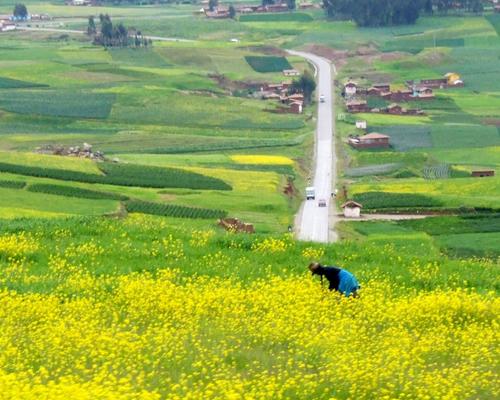 MARCH
MARCH
 APRIL
APRIL
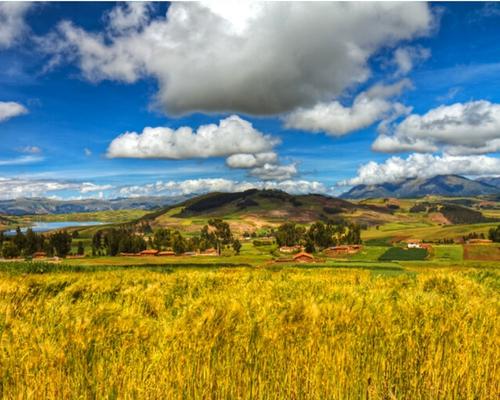 MAY
MAY
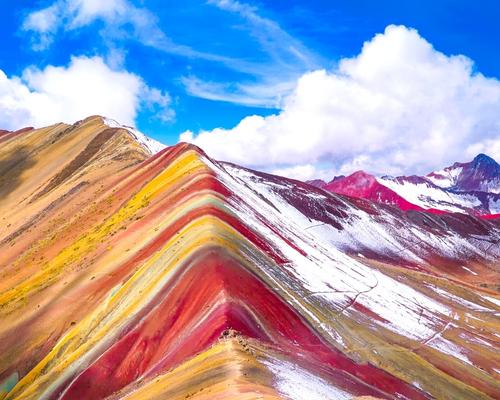 JUNE
JUNE
 JULY
JULY
 AUGUST
AUGUST
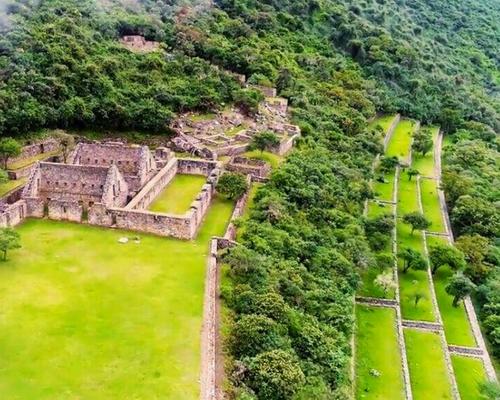 SEPTEMBER
SEPTEMBER
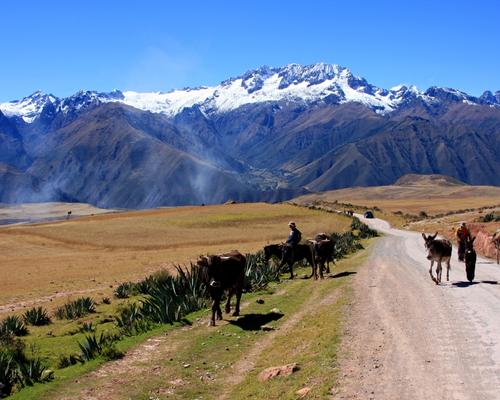 OCTOBER
OCTOBER
 NOVEMBER
NOVEMBER
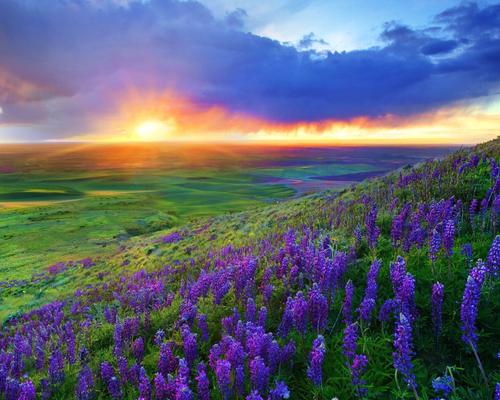 DECEMBER
DECEMBER
To book this tour, a minimum of $ 200 USD per person is required, the remaining balance will be paid upon arrival in Peru, at the Cusco office.
Any other additional information, please coordinate with your travel agent.
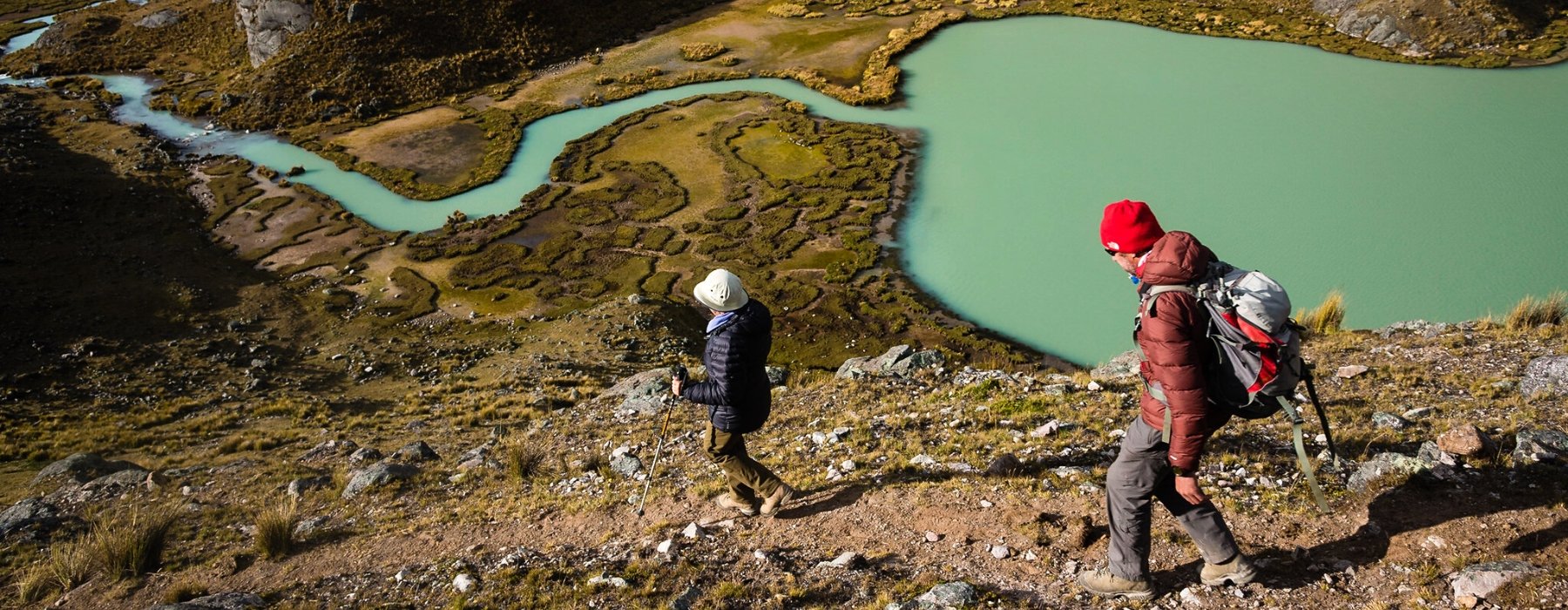
Nothing gets you closer to a country than walking through it, and we’ve got trips to suit walkers of all levels and interests.
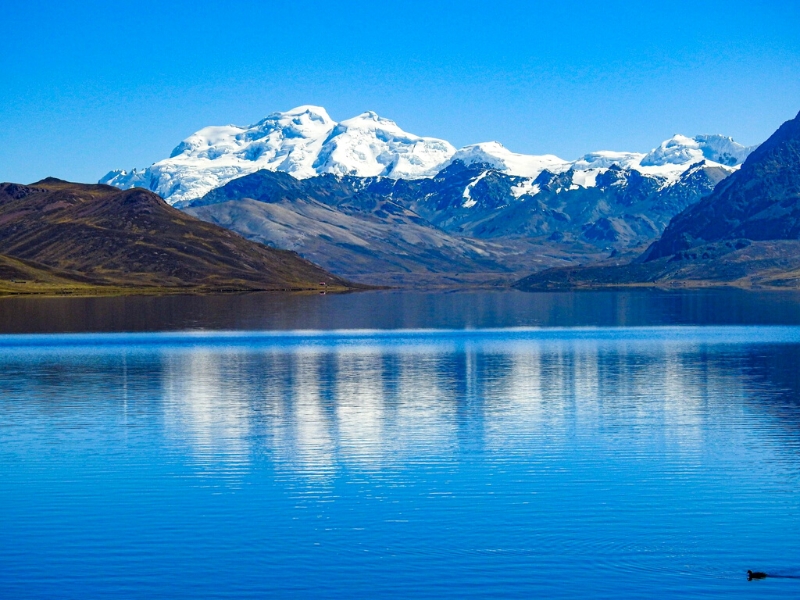
All our Walking trips are graded from ‘Easy’ through to ‘Challenging to Tough’. On our online trip itineraries you’ll find a chart showing the daily walk distances, timings and information on the route including the terrain, altitude. Generally, no specific training is needed but you might feel more comfortable if you’ve got out walking a few times in the lead-up to your trip.
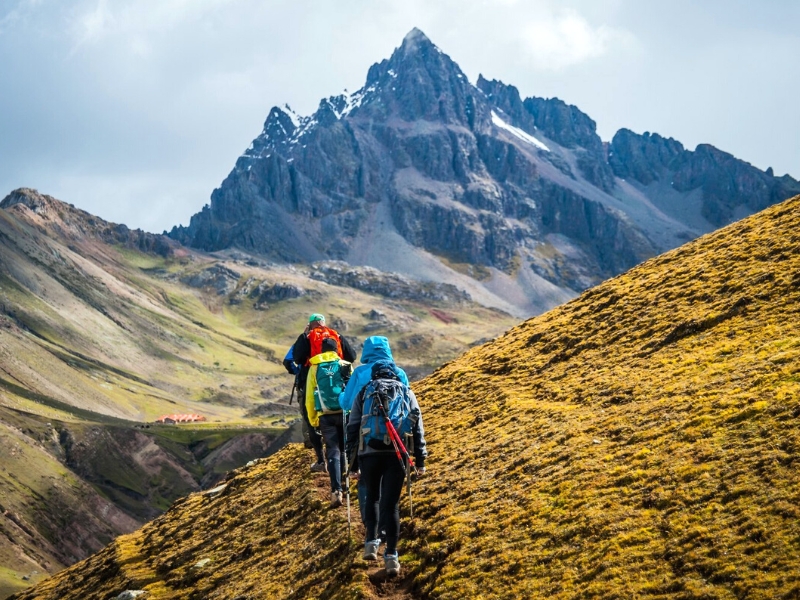
As with all our trips, every group is different but the ‘average’ group consists of roughly half couples and half solo travellers – all sharing a passion for exploring the world on foot. You’ll always have someone to keep you company along the route, but you don’t always have to walk together. Wherever possible your Andean Great Treks leader will allow everyone to walk at their own pace, regrouping regularly along the route.
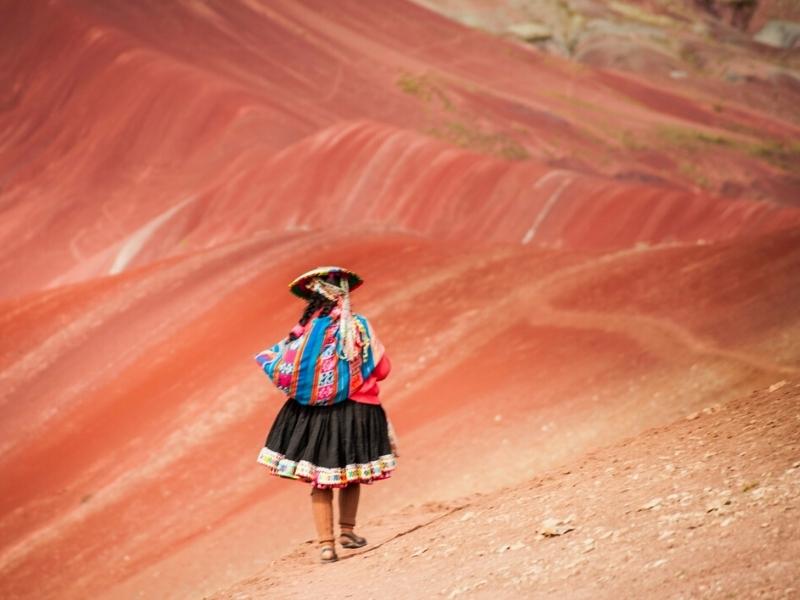
Mostly of our hikes in the mountains in Peru and Cusco like the classic Inca Trail to Machu Picchu, Ausangate Trek, Lares Trek, Ancascocha Trek, Salkantay Trek , involves an average of walking hours of 7-8 hours per day, this timing includes stops for taking photos, lunch, breaks for recovery the energy, and the most important we adapt to your walking pace. This relaxed style of trip involves to know all the attractions in greater depth.
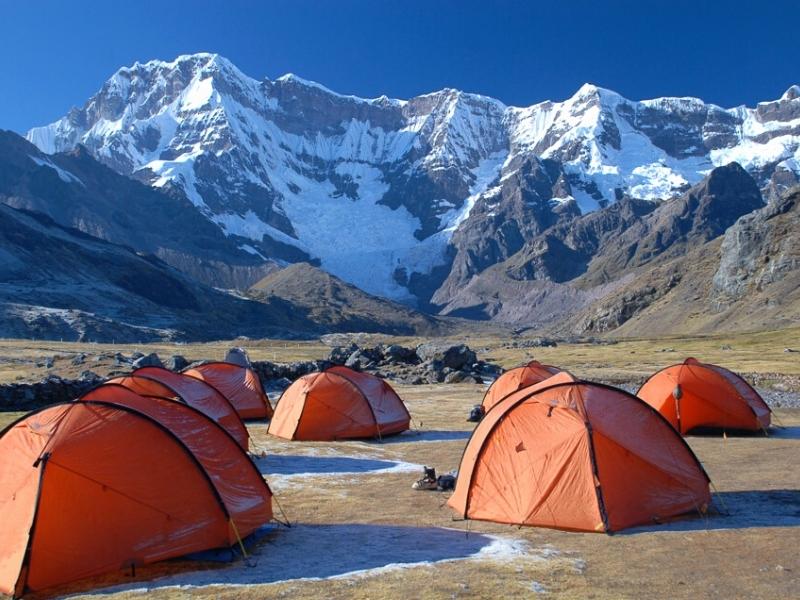
On nearly all our Walking trips, porters or mules will carry all the camping equimpent, so your main luggage will be transported for you. We recommend walk with a light rucksack, you will carry water, snacks, a camera, a small first aid kit and any extra clothing or sun protection. On more remote or challenging treks, additional guides are there to assist the leader tour guide and provide support to the group.
The acclimatization period is very important for our travelers to enjoy the experience. We suggest a minimum of 3 or 4 days of the previous stay in Cusco city, the Sacred Valley of the Incas or Machu Picchu. We recommend you check the acclimation programs we have prepared for you on our website.
The average height of our camps in the trekking circuits is 3,500 masl. In fact, one of the circuits where you sleep at the highest altitude is the Ausangate Trek, where you will have days to set up the tents at a height of 4,300 meters. Remember that Peru has snowy peaks that reach up to 6,700 masl.
From 3,000 meters above sea level, the symptoms of “altitude sickness” vary according to each person, and may even not occur. However, among the most common are a headache, dizziness, nausea, loss of appetite and insomnia. Therefore, upon arriving in the city of Cusco, located at 3,400 meters above sea level, we recommend our travelers to take a good rest, drink plenty of water, eat light meals and take slower walking. Also, it is necessary to avoid alcoholic beverages and cigarettes. The symptoms can be alleviated with high mountain medicines such as DIAMOX or similar products, but we suggest you consult with your doctor before the trip.
While on the trail, hikers will need to carry a daypack (camera equipment, water bottle, extra layers, rain gear, and other accessories you might need on the trail.) Horses and llamas will carry your duffle bag to the next camping site.
The company makes the greatest efforts to provide a safe and unforgettable experience, for this reason, the trekking guides are constantly communicated with the central office through satellite phones, ensuring the welfare of each passenger. Our guides are trained in rescue techniques and first aid in emergency outdoor, these courses are developed annually and have the standards of the wilderness first respond. At all times we have oxygen and first aid equipment. In case of any eventuality a medical director will answer our questions 24 hours a day. In addition to the animals who carry the luggage we have horses to help walkers tired or eager to ride. We recommend getting a travel insurance.

Every Andean Great Treks holiday has been thoughtfully planned and crafted by our specialists. They draw on their own extensive travel experience and the guidance and expertise of our local partners to create superb holidays. Our specialists are committed to making every aspect smooth and enjoyable; they genuinely want to ensure that the holidays they create leave you with wonderful lasting memories.
Every Andean Great Treks traveller is accompanied by an experienced tour guide, you will be immersed in Historic cities, ancient ruins and unfamiliar landscapes are all brought to life by our carefully selected local guides. They want to share their expertise and help you make your own discoveries too; their sole mission is to ensure you enjoy every moment.
Giving you the freedom to make your holiday even more memorable. We know how much our customers look forward to their holiday and we pride ourselves on the choice and flexibility that we offer to enhance every aspect of your experience. Whether it’s getting to the airport, upgrading your room or booking an additional excursion, we can help.

Our guides are the stars of the show; it is their unrivalled knowledge, passion and expertise that will transform your tour experience from good to truly extraordinary!
Because the have grown up in the area and know it like the back of their hand, so they can help you experience whichever aspects most interest you. They’re passionate about sharing their corner of the world with you, and as you explore together, they’ll open your eyes to the intricate details, provide background to enhance your understanding of what you’re seeing, and share stories that will bring everything to life.
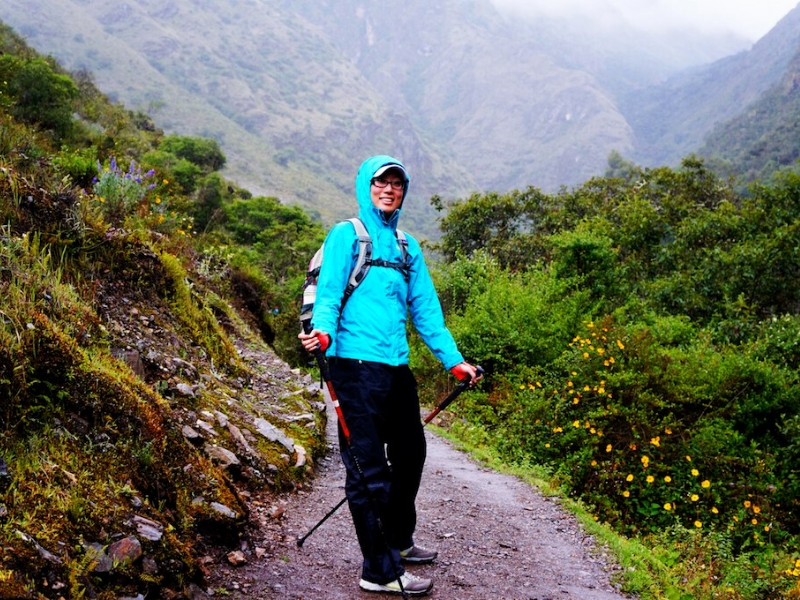
“Your inspiration for a trip can be a single word or a highly evolved outline, but it’s the conversations we have that help us understand the experience you’re looking for. Meanwhile, I’m looking back on the time I spent at the destination.
‘The great thing about working with a specialist at Andean Great Treks is how they take your complete jumble of ideas and turn them into something absolutely spectacular.’
As you begin to share your ideas with your specialist, it will connect them immediately back to a time in their own travels. Conjuring a picture of the rest time they made that same discovery, reminding them how it felt.
Your specialist understands that, when the journey is right, it has the power to excite your emotions in the most profound ways after all, that was the effect on them.
They carry a treasure box of moments, captured over many journeys, into every suggestion they’ll share with you, as they ask you how you want to feel on your trip.

EXPERIENCES THAT CALL TO YOU
It’s what you do in a destination that helps bring it to life. It’s why we strive to choose experiences that help you connect to a place, absorbing a little of its complex character. Wherever your passions lie, we’ll recommend experiences that speak to you, and we’ll recommend the guide or local expert who’s most qualified to help you explore. Packing your holiday full of special experiences means some early starts and long days, but you can be sure that you’ll return home with many incredible memories! Read our Tours and check the Physical Ratings to see if the pace and activity levels are right for you.

STAYS WITH DIFFERENCE
We know that where you stay is a cherished part of your travels. So, we go to great lengths to find places to stay that exceed expectations, or go above and beyond the ordinary, whether in their character, hospitality, or location. Over the years, we’ve discovered the very best properties, trying and testing them, so we can choose the right one for you. We’ve nourished long-standing relationships with these establishments and the people who founded them, and we’ve stayed there many times often, we’ll even know which rooms have the best views (and reserve them for you).

Our style of travel — authentic, thoughtful, and focused on building meaningful connections to the people and places you visit — is inherently respectful and considerate of the destinations we love. We design each aspect of your trip exactly as you want it, which includes its sustainability. That might mean choosing a train journey instead of a flight, staying at eco-friendly wildlife lodges, or opting for experiences that give back to the communities you’re visiting. The choice is yours.
Responsible travel has always been at the heart of what we do. First and foremost, because it gives you the best experience, but, also because it helps to preserve the communities and landscapes you visit. This isn’t new for us we collaborated with local communities and outside experts so we can grow to be better ambassadors.
The most authentic and interesting experiences often directly benefit the local people. We prefer to buy local products that are produced in the organic farms of the Sacred Valley, we also have alliances with local artisan organizations who provide us with souvenir items for our clients, your money directly benefits the local economy.
Our style of travel — authentic, thoughtful, and focused on building meaningful connections to the people and places you visit — is inherently respectful and considerate of the destinations we love. We design each aspect of your trip exactly as you want it, which includes its sustainability. That might mean choosing a train journey instead of a flight, staying at eco-friendly wildlife lodges, or opting for experiences that give back to the communities you’re visiting. The choice is yours.
Responsible travel has always been at the heart of what we do. First and foremost, because it gives you the best experience, but, also because it helps to preserve the communities and landscapes you visit. This isn’t new for us we collaborated with local communities and outside experts so we can grow to be better ambassadors.
The most authentic and interesting experiences often directly benefit the local people. We prefer to buy local products that are produced in the organic farms of the Sacred Valley, we also have alliances with local artisan organizations who provide us with souvenir items for our clients, your money directly benefits the local economy.
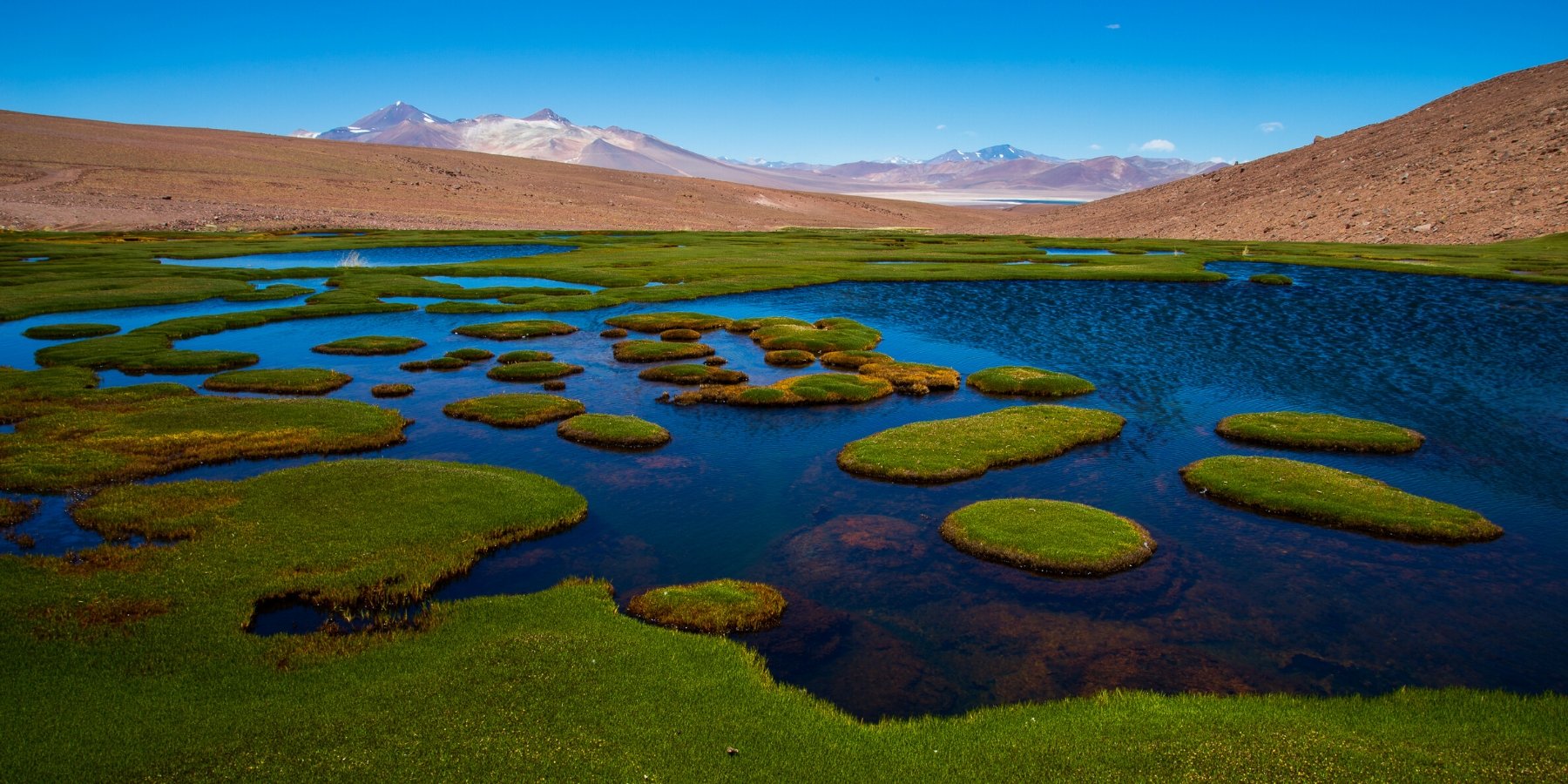
‘There’s a saying: we don’t inherit the Earth from our ancestors, we borrow it from our children. When we show you our country, this philosophy guides everything we do. It’s our responsibility to preserve the environment and wildlife, and support communities. That means using slower modes of transport, like cycling, employing local people, and working with communities who’ll benefit directly from your visit. This also gives you the best, most authentic impression of the places we want to share with you.
We prefer to buy local products in ecological bags, to avoid the use of plastic bags, likewise we teach the use of soaps and ecological products in each tour that we organize. We also work on reforestation projects with local communities who take care of landscape resources such as communal reserves, national parks.
‘There’s a saying: we don’t inherit the Earth from our ancestors, we borrow it from our children. When we show you our country, this philosophy guides everything we do. It’s our responsibility to preserve the environment and wildlife, and support communities. That means using slower modes of transport, like cycling, employing local people, and working with communities who’ll benefit directly from your visit. This also gives you the best, most authentic impression of the places we want to share with you.
We prefer to buy local products in ecological bags, to avoid the use of plastic bags, likewise we teach the use of soaps and ecological products in each tour that we organize. We also work on reforestation projects with local communities who take care of landscape resources such as communal reserves, national parks.
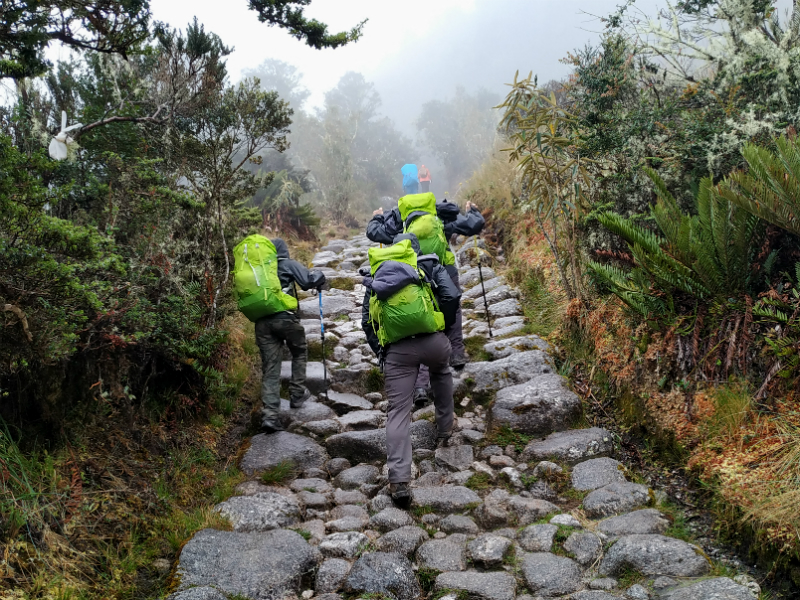
Salkantay Trek and the Inca Trail Hike to Machu Picchu, you will enjoy the impressive landscape,with an incomparable variety of flora and fauna,snowy peaks,bird watching.
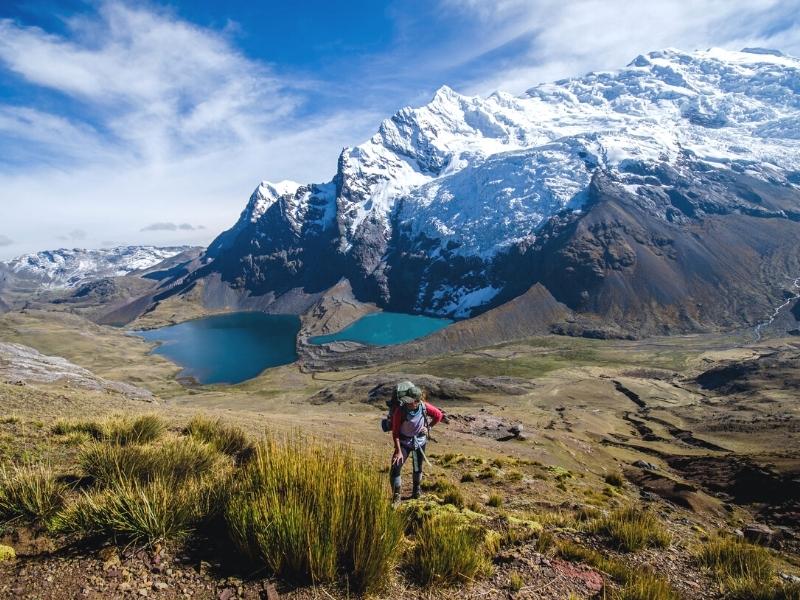
The Ausangate Trek is one of the hiking circuits, most incredible for the beauty of its landscapes, in this mountain adventure you will enjoy unique scenarios, such as lakes of different colors (blue, green, turquoise, red), the mythical mountain of rainbows and ancient Andean cultures, who are the true heirs of the Incas, many still celebrate their ancestral rites.
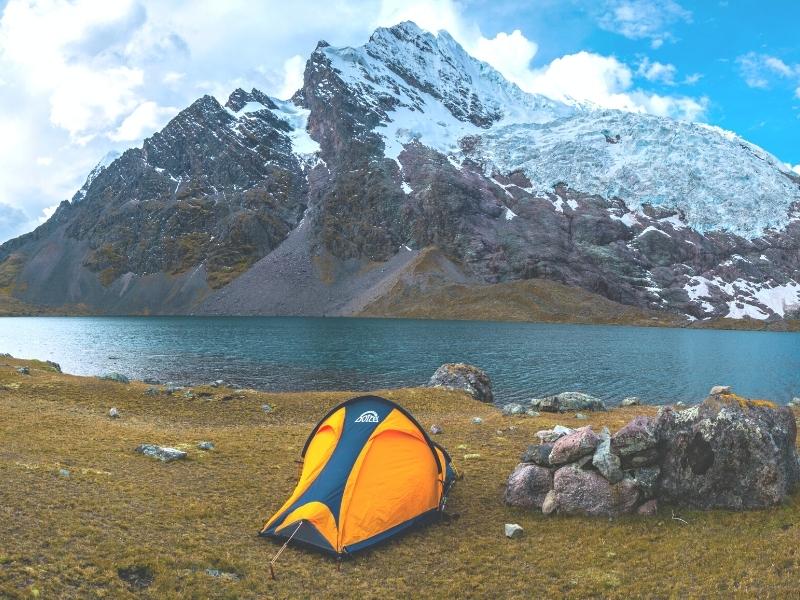
Ausangate is an excellent and quiet/remote trekking circuit offering stunning features such as spectacular mountain scenery, snow-capped peaks, hot springs, turquoise lakes, glaciers, herds of llamas, alpacas, and wild vicuña, picturesque villages, and traditionally dressed Quechua people.